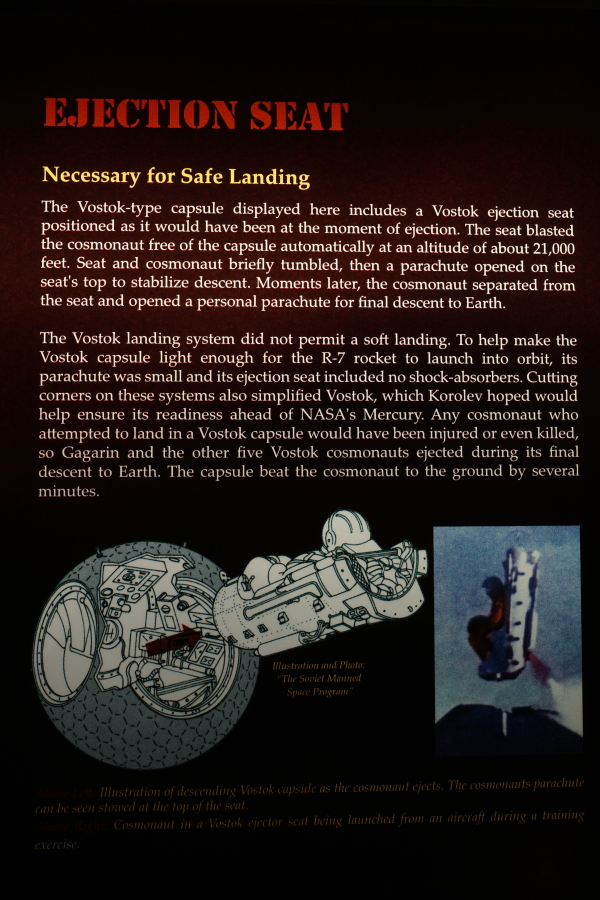| Prev |
heroicrelics.org Kansas Cosmosphere Site Index Vostok Gallery |
Next |
dscc5806.jpg
One of the signs accompanying the Vostok spacecraft's ejection seat. It reads
Ejection Seat
Necessary for Safe Landing
The Vostok-type capsule displayed here includes a Vostok ejection seat positioned as it would have been at the moment of ejection. The seat blasted the cosmonaut free of the capsule automatically at an altitude of about 21,000 feet. Seat and cosmonaut briefly tumbled, then a parachute opened on the seat's top to stabilize descent. Moments later, the cosmonaut separated from the seat and opened a personal parachute for final descent to Earth.
The Vostok landing system did not permit a soft landing. To help make the Vostok capsule light enough for the R-7 rocket to launch into orbit, its parachute was small and its ejection seat included no shock absorbers. Cutting corners on these systems also simplified Vostok, which Korolev hoped would help ensure its readiness ahead of NASA's Mercury. Any cosmonaut who attempted to land in a Vostok capsule would have been injured or even killed, so Gagarin and the other five Vostok cosmonauts ejected during its final descent to Earth. The capsule beat the cosmonaut to the ground by several minutes.
[Caption of left-hand graphic] Illustration of descending Vostok capsule as the cosmonaut ejects. The cosmonaut's parachute can be seen stowed at the top of the seat.
[Caption of right-hand graphic] Cosmonaut in a Vostok ejector seat being launched from an aircraft during a training exercise.
Illustration and photo: "The Soviet Manned Space Program"

| Time picture taken | Fri Apr 15 16:59:34 2016 |
| Location picture taken |
Early Spaceflight Gallery Hall of Space Kansas Cosmosphere Hutchinson, KS |
| Prev |
heroicrelics.org Kansas Cosmosphere Site Index Vostok Gallery |
Next |